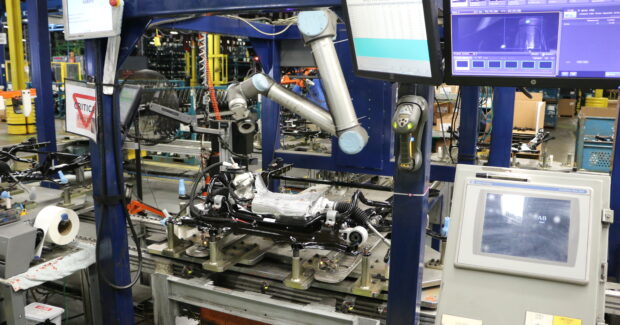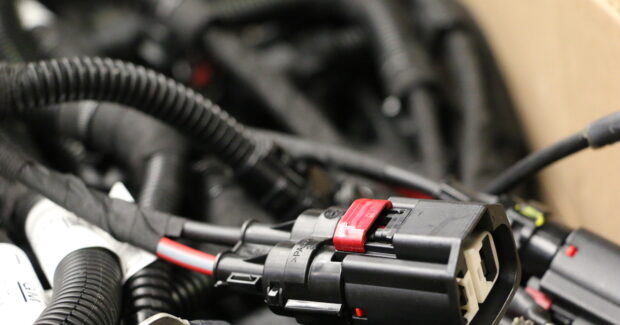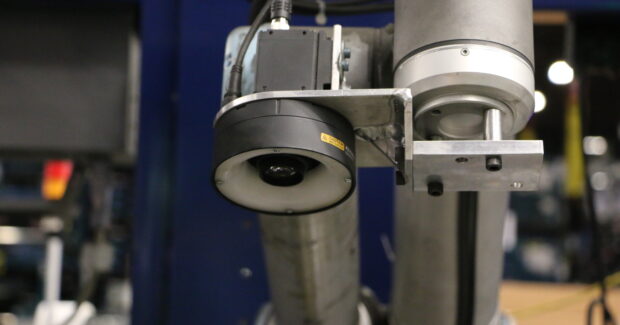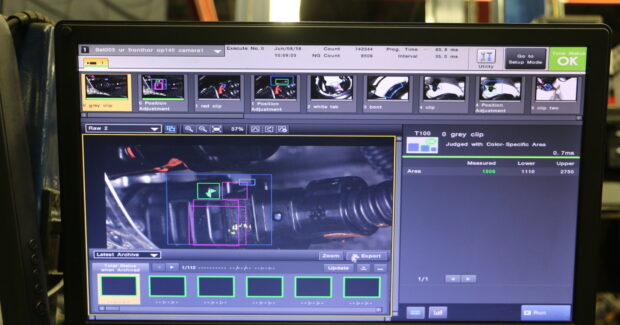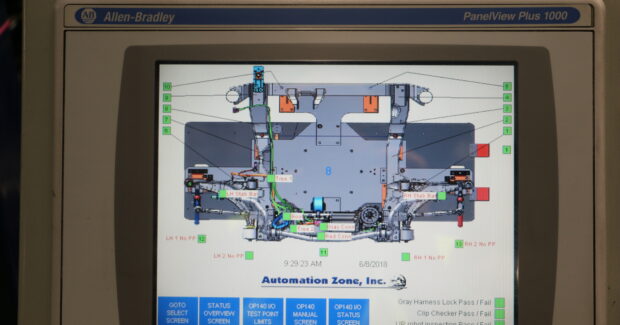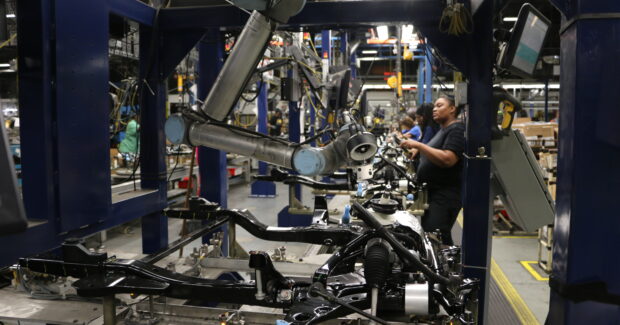AUTOMATING MISSION-CRITICAL INSPECTION
Camera-equipped cobot enables contract manufacturer to market itself as supplier of high-quality automotive engine subassemblies.
Posted: December 30, 2019
At a horseshoe-shaped assembly line in Youngstown, Ohio, engine parts move like clockwork on a conveyor with 60-second takt time for each station.
“Everything is just-in-time, just-in-sequence,” says Gary Bobalik, marketing director for Comprehensive Logistics. Founded in 1903, the company provides high-volume, high-velocity warehouse solutions via proprietary IT system integration, warehouse- and yard-management intelligence systems, parts sequencing, subassembly manufacturing, kitting, parts repacking, returnable container management, cross-docking, international inbound/outbound materials management, and dedicated shuttle transportation.
The International Organization for Standardization- and International Automotive Task Force-certified contract manufacturer operates suspension, powertrain, and interior component subassembly lines to supply two of North America’s largest automotive enterprises. There’s no room for error. Engine cradle subassemblies, for example, have a steering-gear wire harness connector that could cause intermittent or complete loss of power steering if not fully seated and locked.
“That’s a failure mode and effects analysis (FMEA) level 8 on the severity scale,” says Mike O’Keefe, value-added assembly superintendent. “It’s life-threatening, so we need to be 100% sure those clips are locked into place.”
Industrywide, manual inspection is about 80% efficient. Comprehensive Logistics decided it was time to consider automation.
SMALL, SAFE, EFFECTIVE
An automated inspection solution had to meet uptime requirements, be simple to use, and integrate with processes and employees on the line without creating a potential safety hazard. Satisfying those three criteria was easier said than done.
A stationary multicamera inspection system couldn’t get into tight spots and wasn’t as repeatable as required. A probe-style robot didn’t meet repeatability requirements, either.
Then they found the UR10, a ceiling-mounted robotic arm with 51 inches of reach that could be programmed to move and position a camera under hard-to-reach mission-critical points. It was developed by Universal Robots (UR) co-founder and 2018 Engelberger Robotics Award winner Esben Østergaard to meet the need for reasonably priced industrial robots that are safe to work with.
And that’s how Comprehensive Logistics assembly workers got a new colleague at the end of the line.
REAL-TIME RESULTS
Automation Zone, a certified UR systems integrator in Castalia, Ohio, that’s provided PLC and HMI programming, electrical hardware design, electrical panel fabrication, installation support, and start-up assistance since 2001, developed a turnkey inspection application that provides results in real time.
The line assembles two engine cradle versions: a diesel motor with 11 inspection points and a gas motor with nine inspection points. Integrated software tracks the build through the line, telling the cobot which version to inspect.
The cobot’s arm is equipped with a Keyence Corp. CA-HX200C LumiTrax 16x-speed color camera with high-speed, large-capacity CV-X252FP controller. The camera photographs each connection before the arm retracts to a home position and waits for the next assembly. Each image immediately appears on a screen next to the cobot. A second screen with a diagram of the engine cradle shows each completed inspection point with a green or a red check mark to indicate pass or failure.
Cycle time on the assembly line is set for about 48 seconds. The cobot takes approximately 32 seconds to run through the inspection, providing enough time for rerun fails without the whole line coming to a standstill.
“If the inspection fails, we can go in and reinspect just the failed portion of the cycle,” says O’Keefe. “A stand-alone robot will typically rerun the entire process, which takes me over my 60-second takt time.”
FLEXIBILITY FOR FUTURE APPLICATIONS
The solution is also flexible. If a customer has new requirements or changes inspection criteria, it’s easy to add inspection points to the process. “Automation Zone dials in remotely, updates what’s needed, and walks us through the process,” says O’Keefe.
Flexibility is also beneficial if the cobot stops due to a power outage or if it’s interrupted by human interaction.
“We just reinitiate the robot,” says O’Keefe. “We have a couple other robot scenarios in our facility where you need to ‘return-to-home’ those devices and then rerun the process completely.” Operators used to many interruptions are now able to do their job continuously.
Comprehensive Logistics has run the cobot for two years in two- or three-shift operations around the clock. “Aside from adjusting some images on the camera unrelated to the robot’s programming, we’ve not had any interruption in production since installation,” says O’Keefe.
Crane operator George White regards the cobot as just another coworker on the line. “It’s here before I am during the day and here when I leave,” he says. “It’s like family.”
He may have more such coworkers in the future.
“If we’re awarded more assembly builds, we could replicate this process on other lines if the customer has mission-critical inspection points that need to be 100% quality,” says O’Keefe.
Comprehensive Logistics, 4944 Belmont Ave., Youngstown, OH 44505, 330-530-7600, [email protected], www.complog.com.
Universal Robots, 5430 Data Court, Suite 300, Ann Arbor, MI 48108, 844-462-6268, www.universal-robots.com.





